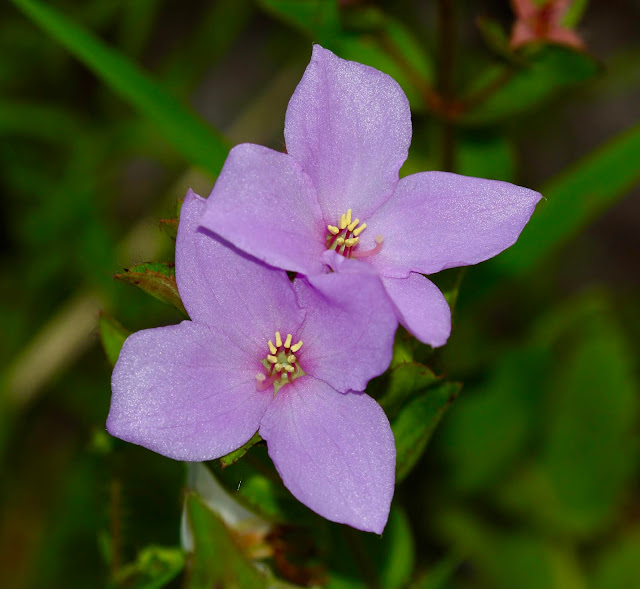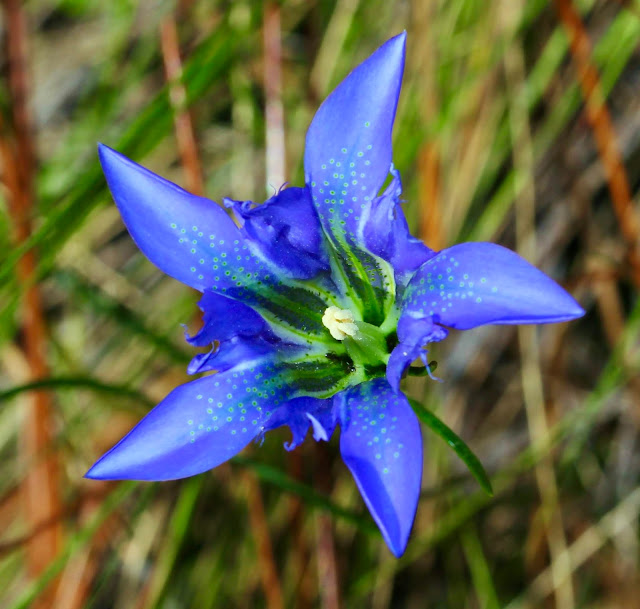NORTH CAROLINA SANDHILLS
I recently visited the North Carolina sandhill region. I meet my friend Will Stuart and he kindly showed me some of the more interesting areas and unique plants of the region.
The Sandhill region of North Carolina is part of a larger geographical province that runs along the eastern United States coastal plain from N.C. through Georgia. The area consists of ancient sand dunes created and left behind by seas that once covered the region. The Sandhills are characterized by deep, nutrient-poor, sandy soils, xeric conditions, and frequent fires. This unique habitat creates many challenges to the fauna and flora that live there. But, despite these challenges the area is one of the most biodiverse in the United States. One source states, “this area is home to one of the most diverse ecosystems in the U.S. — rivaling even the diversity of the tropical rainforest. Beneath the mighty boughs of the Longleaf Pine forest, 150 to 300 species of groundcover plants per acre can be found. Sixty percent of the amphibians and reptiles inhabiting in the Southeast can also be found here, along with more breeding birds than in any other southeastern forest type. Combine this richness with the unique species found in the deciduous Piedmont forest and it’s no wonder that our region is what naturalists call “a biological hot spot.”1 In N.C. the Sandhills area covers parts of Cumberland, Harnett, Hoke, Lee, Montgomery, Moore, Richland, and Scotland Counties.
 |
| Figure 2: Spurred Butterfly Pea (Centrosema virginianum) common in disturbed areas such as roadsides and dry pine-oak forests. |
 |
| Figure 3: Sandhill Morning Glory (Stylisma patens) This diminutive plant often forms large mats of growth on the dry pine forest floors. |
One of the most widespread plant community within the Sandhills is the Dry Longleaf Pineland which is dominated by an open canopy of Longleaf Pine (Pinus palustris) with a sub-canopy of scrub oaks such as Turkey Oak (Quercus laevis), Sand Post Oak (Quercus margarettae), Bluejack Oak (Quercus incana), (Q. falcata) and a herbaceous layer dominated by grasses such as Wiregrass (Aristida stricta) and Purple Three Awn Grass (Aristida purpurea var. longiseta).
 |
| Figure 4: This shows a typical Dry Longleaf Pineland dominated by an open canopy of pines with a sub-canopy of scrub oaks. |
 |
| Figure 5: Blackjack Oak (Quercus marilandica) one of the many oak species found in the sandhills. |
Other plant communities are mostly variants of this community based on hydrology. The rolling terrain seems to repeat a general pattern of higher, dryer, and more open pine dominated savannas to moister slopes and eventually low wet areas where water drains or stands. As one walks down from the very open dry pine ridges towards the lower wet areas the vegetation becomes noticeable thicker, basically creating a dense wall of vegetation. The classification of these plant communities varies greatly within the literature. I will use the terminology that Bruce Sorrie uses in his guide,Wildflowers of the Sandhills Region.2 For a more detailed and technical community classification read the, Guide to the Classification of the Natural Communities of North Carolina (4th Approximation).3
 |
| Figure 7: There was a nice variety of Rhexia or Meadow Beauty species blooming in the area. This is Bog or Ciliate Meadow Beauty (Rhexia petiolata). Note the short, straight anthers. |
 |
| Figure 8: This is White Meadow Beauty (Rhexia mariana var. exalbida). It is an easy Rhexia to identify - look for the combination of white flowers and small linear leaves. |
 |
| Figure 9: This is Savanna Meadow Beauty (Rhexia alifanus). It is our tallest Rhexia species with unbranched stems and blue-green leaves that hug the stem. |
 |
| Figure 10: Rhexia alifanus |
 |
| Figure 11: Nash's Meadow Beauty (Rhexia nashii), this species has characteristic gland tipped hairs. |
 |
| Figure 14: The variegated leaves of Sandhill Bean (Phaseolus sinuatus) |
 |
| Figure 15: Pine Barren Gentian (Gentiana autumnalis) blooms later in the fall. |
 |
| Figure 16: Yellow Fringed Orchid (Platanthera ciliaris) blooms late summer. |
 |
| Figure 18: Small Spreading Pogonia (Cleistes bifaria) blooms late spring into early summer. |
 |
| Figure 19: Large Spreading Pogonia (Cleistes divaricata) blooms in late spring through early summer. |
Resources:
1. “Sand and Clay, Fire and Water: The Story of the Sandhills/Piedmont Area.” Sandhills Heritage Gateway, sandhillsheritagegateway.org/about/sandhills-piedmont-areas-geology-history/.
2. Sorrie, Bruce A. A Field Guide to Wildflowers of the Sandhills Region: North Carolina, South Carolina, Georgia. University of North Carolina Press, 2011.
3.Schafale, Michael P. “Natural-Community-Classification-Fourth-Approximation-2012.Pdf.” Natural Heritage Program, Department of Environment and Natural Resources, 1 Mar. 2012, www.ncnhp.org/references/publications/guide-classification-natural-communities-north-carolina-4th-approximation.
4. Way, Albert. "Longleaf Pine Ecosystem." New Georgia Encyclopedia. 08 June 2017. Web. 18 December 2017.
5. Crofton, Elizabeth W. (2001). "Wildnotes: Flora and Fauna of the Longleaf Pine-Grassland Ecosystem".The Fire Forest Longleaf Pine-Wiregrass Ecosystem. 8 (2): 69–77.
6.Radford, Albert Ernest, Harry E. Ahles, and Clyde Ritchie Bell. Manual of the Vascular Flora of the Carolinas. Chapel Hill, NC: U of North Carolina Press, 1983. Print.
7. Weakley, Alan S. Flora of the Southern and Mid-Atlantic States. Chapel Hill, NC: U of North Carolina Herbarium, North Carolina Botanical Garden, U of North Carolina, Chapel Hill, 2015. Print.




